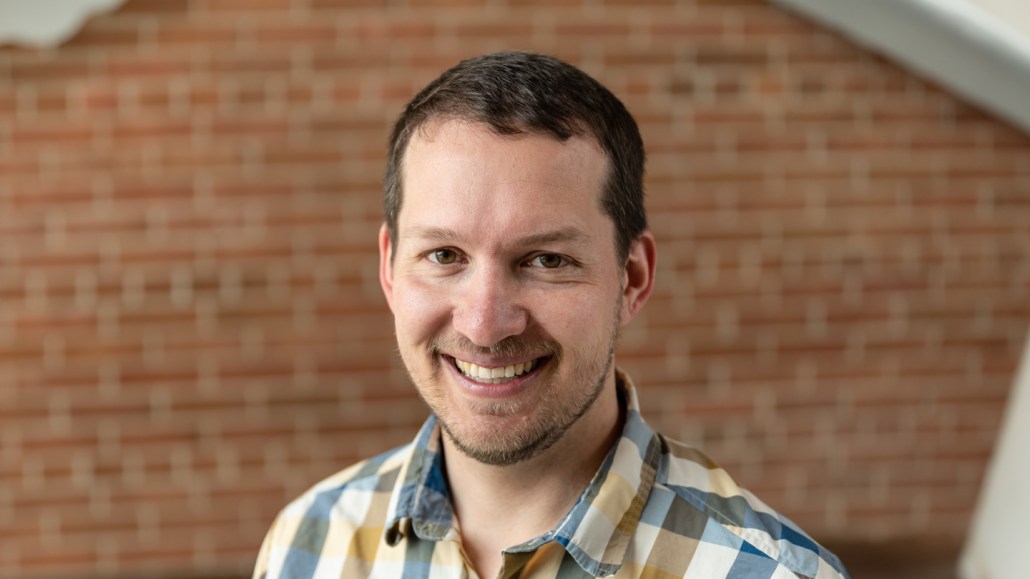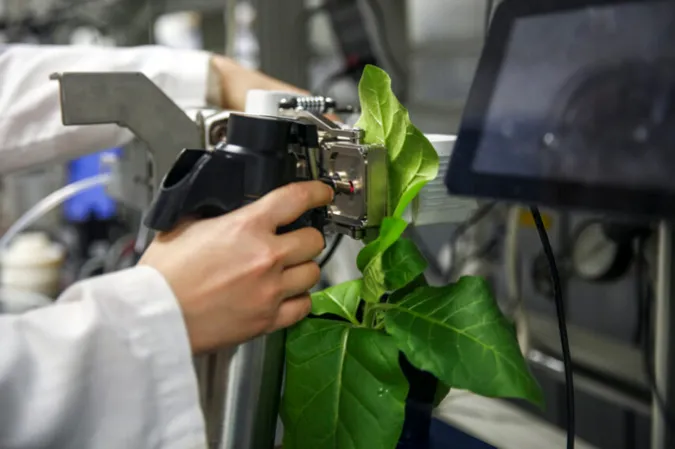
Berkley Walker is deeply fascinated by plants — and wants to better understand their inner workings.
Emily Walker
Berkley Walker didn’t plan on becoming a scientist; he wanted to be an entrepreneur. And he got started early on that goal: In high school in Portland, Ore., he started a granola bar company, which helped pay for his bachelor’s degree in microbiology.

After college, Walker went to work as a product manager at an instrumentation company in Washington state, planning to go to business school and then into biotech. But a class on environmental biophysics at nearby Washington State University in 2009 changed his trajectory.
The course was about using mathematics to model physical systems in nature. “Working that math out to understand how energy and matter exchange within the environment,” Walker says — that was all it took. He decided to pursue a career as a plant scientist. “I wanted to have some kind of usefulness to the world,” Walker says. “Feeding people is where I settled.”
Amazing but inefficient plants
Today, at Michigan State University, Walker wants to understand the intricate details of how photosynthesis works, with the ultimate aim of improving it.
He remains deeply fascinated by plants: “You just take this little seed, you put it in the dirt and then you get this plant,” he says. “And it spreads these leaves out. And those leaves just take the sun, and they scrub carbon dioxide out of the atmosphere, and they use that to make the food that we eat, the clothes that we wear, the air that we breathe, energy that we consume. And that’s just miraculous.”
But as impressive as photosynthesis is, it is surprisingly inefficient. A leaf converts just around 1 percent of the sun’s light into usable energy, Walker says. In part that’s because of mistakes in the first step of photosynthesis. The enzyme that captures CO2 molecules and sticks them to sugar makes a lot of mistakes, often grabbing oxygen instead. Those mistakes result in a compound that actually inhibits photosynthesis. Photorespiration, a kind of recycling process, gets rid of that compound — but photorespiration requires a lot of energy.
Losses due to this recycling in the American Midwest over an average wheat and soybean growing season add up to about 148 trillion dietary calories, Walker says. “If you were to convert these calories into doughnut equivalents,” he says, “you would have a stack of doughnuts that would go to the moon and back [more than 20 times].”
Any efficiency gain could make a huge difference in agricultural productivity. But first scientists have to better understand how photorespiration works.
To that end, Walker came up with an innovative technique to trace carbon molecules in leaves, research reported in a 2022 paper in Nature Plants. The researchers were using flux analysis, which reveals the movements of molecules through plants’ metabolic network. But they needed a better way to freeze the metabolism of a plant. The problem was, there was no way to spray liquid nitrogen into the instrument chamber that held the leaves.
After talking to engineers at the company that makes the instrument, Walker decided to drill a hole in the chamber so his team could insert a nozzle to spray in liquid nitrogen and hit the leaf surface instantaneously. “That’s a really critical step,” says Xinyu Fu, who has been a postdoc in Walker’s lab for the past four years. A lot could change in the 10 seconds it would take to open the chamber and take the leaf out.

The work revealed that up to about 40 percent of the carbon-bearing amino acid serine that is produced during photorespiration gets diverted by the plant to be used for something — perhaps protein synthesis — rather than going all the way through the recycling process. That suggests optimizing photorespiration in the context of climate change could result in more nutritious, protein-rich crops. But, “as we’re trying to change it,” Walker says, “we need to understand what trade-offs there might be.”
A generosity of spirit
Colleagues who know Walker best point to his eagerness to collaborate as one of his strengths, along with his generosity of spirit.
Don Ort, a plant scientist at the University of Illinois Urbana-Champaign and Walker’s postdoc adviser for nearly three years, says Walker is a committed teacher and colleague. “Being involved in the education of graduate students and postdocs is a passion for him,” Ort says. “He’s very passionate about what he does. He does it with a very high level of enthusiasm and a very high level of optimism. And it’s infectious to people around him.”
Walker sees plant science as one big community that is trying to solve two big problems: How to make crops more productive to feed a growing population, and how to do it in a changing climate, which may pose any number of challenges to agriculture. And he believes we’ll start seeing solutions in the coming decades, whether they come out of his lab or someone else’s.
“Whoever comes up with those, and if they’re shown to work and work repeatedly in a lot of crops, then that’s a really big deal,” he says. “That’s the kind of idea that we’re chasing.”







